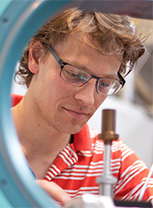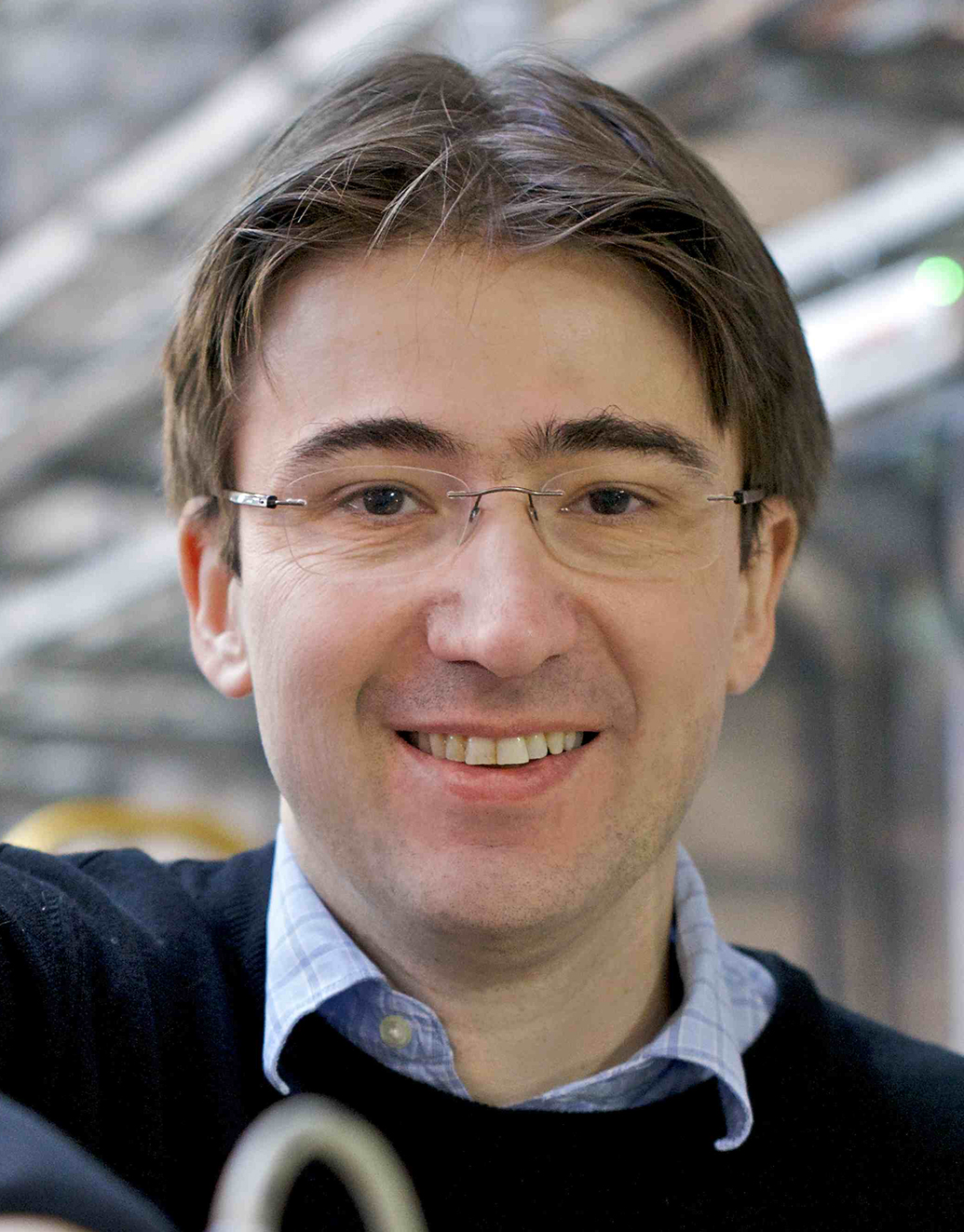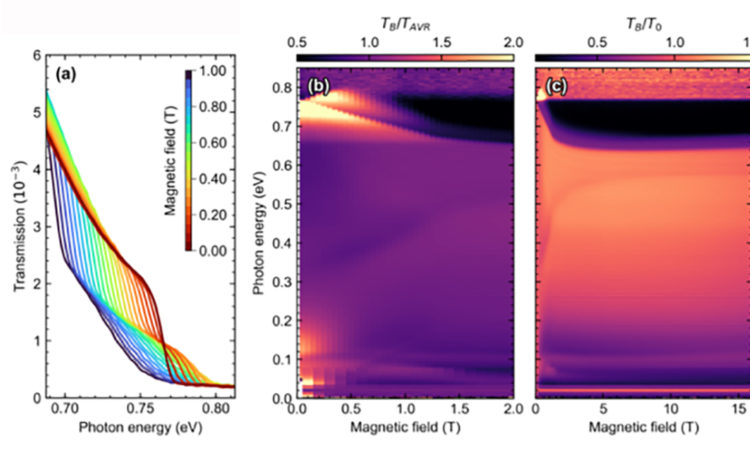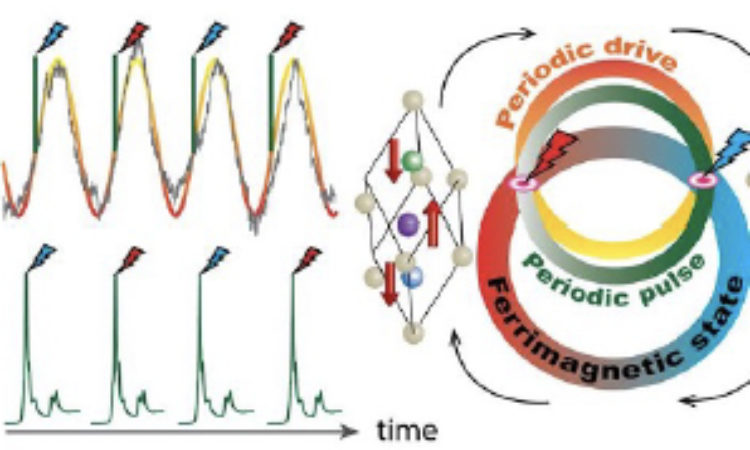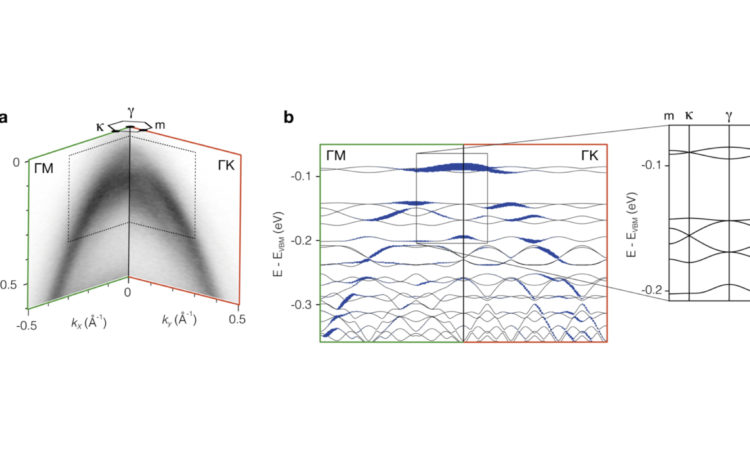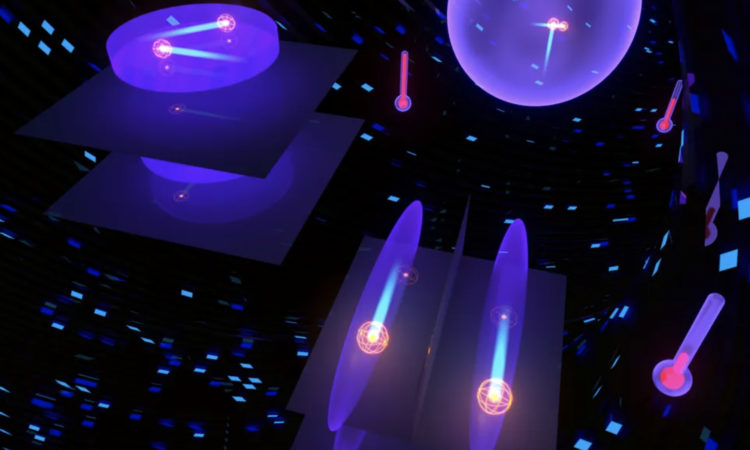Superconductivity switched on by magnetic field
Superconductivity and magnetic fields are normally seen as rivals – very strong magnetic fields normally destroy the superconducting state. Physicists at the Paul Scherrer Institute have now demonstrated that a novel superconducting state is only created in the material CeCoIn5 when there are strong external magnetic fields. This state can then be manipulated by modifying the field direction. The material is already superconducting in weaker fields, too. In strong fields, however, an additional second superconducting state is created which means that there are two different superconducting states at the same time in the same material. The new state is coupled with an anti-ferromagnetic order that appears simultaneously with the field. The anti-ferromagnetic order from whose properties the researchers have deduced the the existence of the superconducting state was detected with neutrons at PSI and at the Institut Laue-Langevin in Grenoble.
By Simon Gerber, SLAC National Accelerator and Stanford University
and Michel Kenzelmann, Paul Scherrer Institut
Based on article published in Nature Physics
Press release in English in French
The interplay of magnetic and charge fluctuations can lead to quantum phases with exceptional electronic properties. One of the most fascinating phenomena in this respect is the emergence of superconductivity in materials with strong electronic fluctuations. Some of the best model materials to study the relation between magnetism and superconductivity are f-electron superconductors. Strong fluctuations in f-electron metals can arise firstly because the f-electrons associated with rare-earth ions can be either localized or mobile, leading to strong charge fluctuations, and secondly because these materials can be in the proximity of a magnetic quantum critical point. Superconductivity appears to emerge when strong fluctuations exist to low temperatures.
We studied the heavy-fermion superconductor CeCoIn5 using neutron scattering methods. CeCoIn5 is a d-wave superconductor [1] that shares many characteristics with the high-temperature cuprate superconductors. Superconductivity in CeCoIn5 is Pauli limited – it is limited not by superconducting orbital currents induced by magnetic fields, but by a direct coupling of the magnetic field to the superconducting Cooper pairs. What is particularly interesting in CeCoIn5 is that there are two superconducting phases [2]. The second phase, termed Q-phase, is observed at high fields close to the upper critical field Hc2. The nature of this second phase has been a hotly debated topic for more than 10 years.
Our neutron diffraction measurements revealed a few years ago, that a magnetic spin-density wave order exists in the Q-phase [3,4]. What is intriguing about this order is that only exists inside the superconducting phase, and collapses together with superconductivity in a first order transition at Hc2. As such, it is unique and completely different from merely coexisting magnetic and superconducting phases in other superconductors.
Our most recent study now showed the complete absence of magnetic domains in the Q-phase [5]. Most magnetic materials feature multiple domains unless one of the symmetry is selected with the application of external fields. In CeCoIn5 there are in principle two possible magnetic domains. However, our study showed that only a single one of these domains is observed, but never two at the same time. The magnetic field that is applied is perpendicular to the magnetic spin-density wave moments, and so cannot select magnetic domains by directly interacting with the magnetic structure. Even more spectacularly, our experiments demonstrate that the domain can be switched by rotating the field around the magnetic moment direction – a completely unexpected effect.
On a purely phenomenological level, it has been predicted that modulated triplet p-wave superconductivity should occur in singlet d-wave superconductors with spin-density-wave order [6,7]. This effect should be particularly strong in CeCoIn5 because a direct and strong coupling between the spin-density wave and superconductivity is present.
For CeCoIn5 the symmetry-allowed p-wave superconducting wave functions have been determined, and calculating the magnetic susceptibility of these states reveals that they provide a possible domain switching mechanism. In lack of any other coupling mechanism that is allowed by symmetry, we thus conclude that our experiment provides evidence for the presence of modulated p-wave superconductivity in the Q-phase of CeCoIn5.

The Q-phase would thus consist of two superconducting order, one of which is the d-wave order of the main phase, and the second is a p-wave order with the nodes along the [110] nodal direction (shown in Fig. a). The amplitude of the p-wave is modulated in real space as shown in Fig. b.
Further, we showed that the Q-phase emerges in a common magneto-superconducting quantum critical point – resolving the long standing problem of the elusive quantum critical point in CeCoIn5. The Q-phase of CeCoIn5 thus represents a unique example where spatially modulated superconductivity is coupled with spin-wave order emerging at of a quantum critical point.
[1] C. Petrovic, P.G. Pagliuso, M.F. Hundley, R. Movshovich, J.L. Sarrao, J.D. Thompson, Z. Fisk and P. Monthoux, J. Phys. Condens. Matter 13, L337 (2001).
[2] A. Bianchi, R. Movshovich, C. Capan, P.G. Pagliuso and J.L. Sarrao, Phys. Rev. Lett. 91, 187004 (2003).
[3] M. Kenzelmann, Th. Strässle, C. Niedermayer, M. Sigrist, B. Padmanabhan, M. Zolliker, A. D. Bianchi, R. Movshovich, E. D. Bauer, J. L. Sarrao, and J. D. Thompson, Science 321, 1652 (2008).
[4] M. Kenzelmann, S. Gerber, N. Egetenmeyer, J. Gavilano, Th. Strässle, A.D. Bianchi, E. Ressouche, R. Movshovich, E.D. Bauer, J.L. Sarrao, J.D. Thompson,, Phys. Rev. Lett. 104, 127001 (2010).
[5] S. Gerber, M. Bartkowiak, J.L. Gavilano, E. Ressouche, N. Egetenmeyer, C. Niedermayer, A.D. Bianchi, R. Movshovich, E.D. Bauer, J.D. Thompson and M. Kenzelmann, Nature Physics 10, 126 (2014).
[6] D.F. Agterberg, M. Sigrist and H. Tsunetsugu, Phys. Rev. Lett. 102, 207044 (2009).
[7] A. Aperis, G. Varelogiannis and P.B. Littlewood, Phys. Rev. Lett. 104, 216403 (2010).
